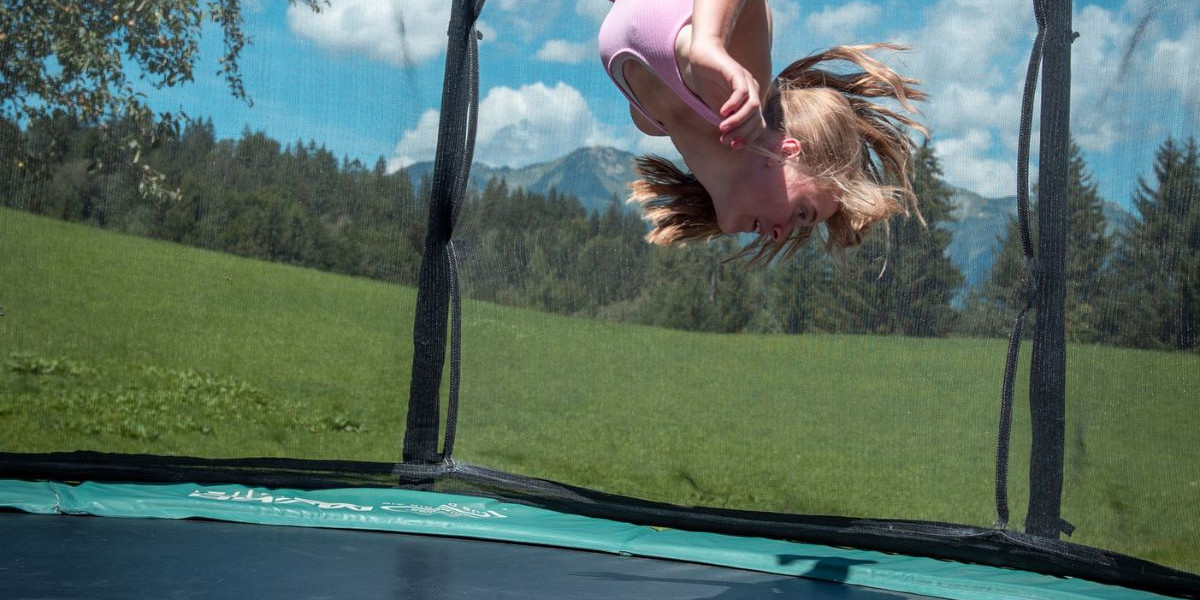Introduction: Weather Meets Outdoor Fun
Owning a trampoline is an investment in active outdoor fun. Families, children, and even adults enjoy the thrill of bouncing and exercising under the open sky. But because trampolines live outdoors, they are directly exposed to weather conditions that can either shorten their lifespan or elevate the risks of damage. Rain, wind, snow, and sun all have unique effects on trampolines, but with the right knowledge and preparation, you can extend their durability and keep them safe for year-round enjoyment.
Sunshine and UV Exposure: The Silent Fader
Sunshine may seem harmless, but extended exposure to ultraviolet rays can weaken trampoline materials. The mat, safety padding, and trampoline net are particularly vulnerable to fading, tearing, and loss of elasticity over time. Using a weather cover when the trampoline is not in use, or setting it up in a partially shaded location, can significantly slow down UV wear. Regular inspections of fabric components can also help you catch problems before they worsen.
Rain and Moisture: The Unseen Threat
Moisture is another major factor in trampoline care. Rainwater can accumulate on the mat and padding, causing sagging, mold growth, and even rust on the frame if it’s not properly treated. Modern trampolines often use rust-resistant steel, but they still benefit from periodic drying and inspections. Investing in a high-quality cover or wiping the trampoline dry after heavy rainfall helps prevent water-related damage. For long-term protection, store removable parts indoors during rainy seasons.
Snow and Freezing Conditions: The Winter Challenge
Cold weather poses unique challenges for trampolines. Snow build-up can add excessive weight to the frame and springs, risking warping or snapping. Freezing temperatures may also make fabrics brittle and more prone to tearing. If you live in colder regions, removing the mat and net before winter storms is often the safest option. For those who want to keep using the trampoline in mild winter weather, clearing snow immediately and limiting bounce sessions during freezing conditions can prevent long-term damage.
Wind Hazards: Anchoring for Stability
Strong winds can turn even a large trampoline into a safety hazard if it isn’t anchored. Lightweight models, in particular, can shift or tip over, posing risks to nearby property. A 14ft trampoline or rectangle trampoline offers a wider surface area, which makes proper anchoring even more important. Anchor kits, ground stakes, or placing the trampoline in a sheltered location can keep it steady against gusts of wind.
Seasonal Maintenance: Extending the Fun Year-Round
Routine maintenance goes hand in hand with weather protection. Beyond monitoring for rust or tears, regular tightening of bolts and checking the tension of springs are essential tasks. For those who use an adult trampoline for fitness, daily wear combined with weather exposure makes these inspections even more important. By dedicating a few minutes to upkeep after storms or seasonal transitions, you extend the trampoline’s usability and safety.
Choosing the Right Trampoline for Your Climate
Not every trampoline is suited for every environment. A rectangle trampoline provides performance-level bounce, while a large trampoline offers more space for multiple jumpers. Those in humid areas should prioritize rust-resistant frames, while families in sunny regions should focus on UV-resistant mats and nets. By aligning the trampoline model with your local weather conditions, you minimize upkeep challenges and maximize enjoyment.
Safety Nets and Weather Shields
A trampoline net is essential not only for safety but also as an added layer of weather resilience. It can prevent debris, leaves, and small branches from settling on the mat. Weather shields and covers are another worthy investment, as they protect the trampoline when not in use. These accessories help reduce direct exposure to elements, ultimately extending the trampoline’s lifespan.
When to Bring the Trampoline Indoors
Portable models and mini-trampolines are often overlooked when discussing weather protection, but they are especially vulnerable. If you have the space, moving the trampoline indoors during severe weather seasons eliminates risks entirely. Even a garage or shed provides shelter from rain, snow, and sun, making it a smart option for smaller trampolines.
Conclusion: Weatherproofing for Lasting Fun
A trampoline can handle years of outdoor activity if owners take the right precautions against the elements. From shielding against UV rays to protecting against rain, snow, and wind, each season requires a different strategy. Simple measures like anchoring, covering, and routine maintenance not only extend the life of your trampoline but also ensure a safe, fun experience for everyone. By understanding how weather affects your equipment, you can truly enjoy bouncing through every season.
FAQs
Can trampolines be left outside all year?
Yes, trampolines can remain outdoors year-round, but protective covers, anchors, and seasonal inspections are strongly recommended to prevent weather damage.
Does rain ruin a trampoline mat?
Rain alone won’t ruin the mat, but standing water and long-term exposure to moisture can cause sagging, mold, or frame rust if not properly maintained.
Is it safe to use a trampoline in the winter?
Yes, trampolines can be used in mild winter weather, but snow should be cleared immediately, and bouncing should be avoided in freezing conditions to prevent fabric damage.
How do I protect my trampoline from strong winds?
Using anchor kits or heavy-duty ground stakes is the best way to secure trampolines during windy conditions. Placing them near walls or fences can also reduce exposure.
What is the best trampoline for durability in different climates?
For sunny regions, choose UV-resistant mats and nets. For humid or rainy climates, rust-resistant steel frames are ideal. Larger models like a 14ft trampoline or rectangle trampoline provide added space while still offering durability when properly maintained.









